Women in Refrigerators: Killing Females in Comics

Why does death occur in so many stories? When used as a storytelling method, death is not entirely necessary because a writer does not need to rely on a character’s demise to tell an engaging story. On one hand, death can provide heartbreaking tragedy and relatable motivation to our protagonist, giving the story more magnitude. On the other hand, death can be manipulative if a character is killed just for the spectacle, making it a cheap gut punch to the readers. Comics in general are criticized for falling into the latter category, as death of comic book characters are mostly done to gain more readers. Never is this more evident than in the comic book trope known as Women in Refrigerators (WiR).
WiR was coined by the well-respected writer Gail Simone, best known for her work on Deadpool, Wonder Woman, and the Birds of Prey. The trope came from Green Lantern #54, where Kyle Rayner was horrified and filled with rage to find his beloved girlfriend, Alexandra DiWitt, stuffed in a fridge. Kyle soon discovered that Alexandra was killed by Major Force as a way to get under Kyle’s skin. Simone was appalled to see Alexandra Diwitt and other female characters like her be killed so heartlessly, and she was sick of women characters being treated like dispensable commodities for writers. Many male and female writers took Gail Simone’s words to heart, and WiR became a huge public debate in comic circles. The trope usually has three common occurrences.
- A female character (not just limited to a love interest) is killed, sexually assaulted, depowered or brutally injured beyond repair.
- A villain is responsible for the woman’s death and only does it to provoke the hero.
- The woman’s death provides vengeful motivation for the hero to defeat or kill the villain.
Now that the 3 rules have been laid out, let us dissect the reasons why WiR is a harmful stereotype towards women.
Objectifying Women
The reason WiR is a harmful trope is because it objectifies female characters into simple story devices, and their character development serves to just give motivation to the male hero. It is the same reason why “damsels in distress” is a stereotypical trope; it gives the illusion that women cannot fight for themselves. The trope is not just limited to love interests, but also mothers, sisters, and even female friends of the male hero. Yet the trope mostly applies to the love interests. It is more tragic for the hero to lose the women he devoted his whole life to. This does not mean that female characters should be untouchable; as long as the female’s death is more concurrent to the story than just to give motivation to the hero. Despite that, it is staggering to think of how WiR appears everywhere in comics, even to this day.
Gail Simone released a long list of examples of stories that use WiR, and the list of examples has only increased. Like a lot of tropes that stereotype and diminish women this problem does not seem to be going away, showing how the industry still has some evolving to do. The counter-argument made against WiR is that it symbolizes how women are victims in real life, and the writers are just commentating on this issue in their stories. True, we do live in a day and age where a lot of women have become victims to despicable men, and it is important to reflect ongoing issues in day to day life. However, the problem with this argument is that most stories involving WiR do not really have anything profound to say about female violence. The stories themes are not really centered around female violence, and female characters are killed simply to invoke shock into the reader.
The other big counter-argument towards WiR is that men are killed all the time in comics, therefore making WiR look nit-picky. That is why the new trope, Dead Men Defrosting (DMD), was introduced to demonstrate that men being killed for motivation and women getting killed for motivation are very different. First of all, having the role reversal (a superheroin’s male love interest getting killed by a villain for motivation reasons) does not happen nearly as much as it does with WiR. In addition, when a male character is killed, he is not exploitively tortured in a sexual manner, or sexually assaulted. The same cannot be said for women being killed by villains. The reason DMD is a valuable argument is that it points out that male heroes die heroically, often sacrificing themselves to save the world or to stop an imposing villain. Lastly, men may be killed or paralyzed, but they will most likely return fully recovered and back to fighting crime like nothing ever happened. On the opposite end, women often stay dead or depowered for a very long time, unless a possible reboot happens.
Examples of Women in Refrigerators
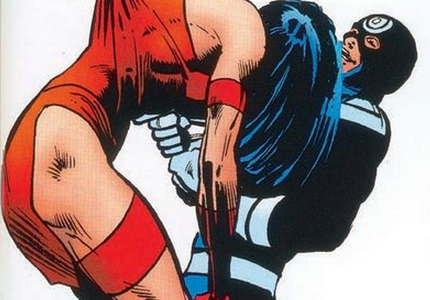
Elektra was the popular Greek ninja created back in the 80’s by Frank Miller during his run of Daredevil. While Miller may have brought the character to life, he would also be the one to kill her off in Daredevil #181. In this story, she was tasked by Kingpin to kill Matt Murdock’s partner Foggy Nelson, but she spared him for Murdock’s sake. Kingpin’s top assassin Bullseye took this opportunity to kill Elektra, making sure he remained Kingpin’s number 1. While she put up a fight, she was impaled with her own sai by Bullseye. Then, she crawled to Matt’s doorstep and died in his arms. Bullseye did not kill Elektra to simply motivate Daredevil, but Daredevil still came after Bullseye to avenge Elektra, meaning the story still follows the three main components of WiR. Elektra was also Matt Murdock’s girlfriend in college, meaning she was mainly created to give Daredevil a love interest, only to be killed a couple issues later. She first appeared in Daredevil #168 and was killed in #181, so her being expendable to the storyline seemed deliberate.
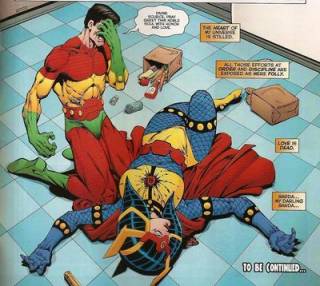
Where WiR becomes even more insulting is when it is applied to god-like women because it diminishes their greatness as powerful characters. Big Barda, for example, was an all powerful warrior for the planet Apocalypse, and she was married to the similarly powerful Mister Miracle. She never came across as a sidekick to Mister Miracle; in fact it seemed feasible that her powers surpassed her husband’s. One would expect her to die in a big battle or something to that extent. Instead she is found dead in her kitchen with a bullet shaped hole in her chest. While Big Barda adopting the role of housewife was of her own choosing, she was still a warrior first and foremost. Her death is disappointing because it gave the impression she did not put up much of a fight. Her killer turned out to be the Infinity Man, who murdered her only to provoke Mister Miracle.
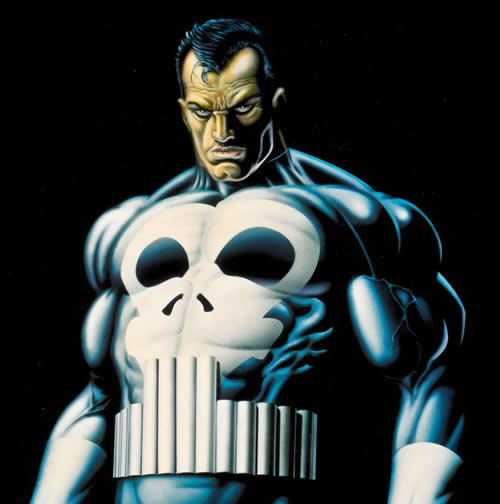
Probably the most obvious example of WiR is in the backstory to the vengeful killer, The Punisher. In his past, Frank Castle was a special forces officer who had a seemingly happy life with his wife, Maria Castle, and their two loving children. Because of Frank’s status to the force and U.S. Marine core, he became a huge target for many different criminals. Frank’s life would take a turn for the worst, as his whole family was gunned down by mafia members while they were harmlessly having a picnic. Don’t get me wrong; The Punisher is a classic Marvel character for a reason, and refreshingly stands out from all the heroes in tights. Nonetheless, he is the embodiment of WiR. His family had little significance beyond motivation through death. The death of his family may have emotionally destroyed Frank, but to the readers, they were merely created to be killed. This is taken to the extreme in the 2004 film, The Punisher. Not only did his wife and only son get killed, but almost all of Frank’s family relatives are brutally gunned down at a family gathering. These extra deaths are completely unnecessary because it downplays the importance of his wife and son’s death; as if it was not manipulative enough.
The Death of Gwen Stacy
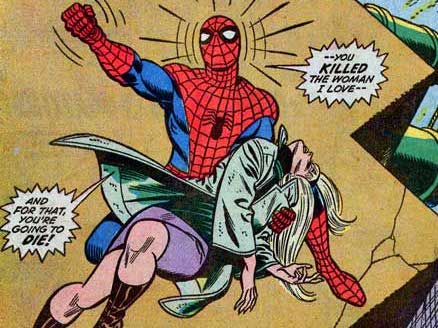
Gwen Stacy’s death is one of the most famous examples of WiR, becoming a template when discussing female treatment in comics. However, when looking at her death from a storytelling perspective, it is a little more well-written than other examples of WiR. For those who don’t know, in The Amazing Spider-Man #121-122, The Green Goblin threw Gwen Stacy off of a bridge only to have Spider-Man catch her with his webbing. Unfortunately, when his webbing caught her, it broke her neck, making Spider-Man partially responsible for her death. There is a lot to take in to consideration in the effectiveness of Gwen’s death. Keep in mind, this was one of the first times an important female love interest was killed off, causing shock to many readers at the time. It does not take away the fact it is an example of WiR, but it is a factor to consider.
The downside is that Gwen’s death is only done to prove grief from Spider-Man, and not to give a proper closing to her character development throughout the series. She does feel like an object for Spider-Man to cry for. Yet, to the credit of the writer Gerry Conway, Spider-Man’s reaction to her death is more complicated than just revenge. He probably feels more grief than revenge, as he was technically the one who killed her in the end; Green Goblin was just the one who put her life in danger. It is one of those mistakes that Spider-Man wishes he could take back, and now he has to live with the ramifications. It also shows his transition from when he first started out as Spider-Man, into his adulthood.
When Uncle Ben died, it demonstrated how Peter should take his powers seriously and use them to help people. Similarly, Gwen’s death represents how his life as Peter Parker and Spider-Man need to be separate in order to keep his loved ones from being killed. With all this in mind, the reason Gwen’s death is remembered by many comic book readers is because of how inarguably effective it was. Even to this day, it is depressing to see our hero try so hard to save their lover, only to have them die in their arms. So if a character’s death is generally saddening to the reader, then the writer is doing something right. It may fall into the WiR category, but maybe it should be considered an exception to the rule because context is always important.
Crippling Barbara Gordon
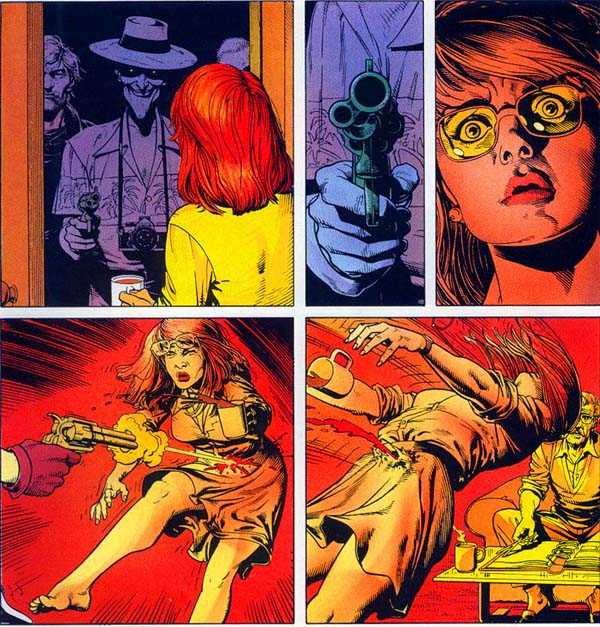
In Alan Moore’s The Killing Joke, The Joker breaks into Commissioner Gordon’s home and shoots Barbara Gordon in the pelvic region. She did survive the gun shot, but she would never walk again because of it. This officially ended her persona as Batgirl. The Killing Joke has arguably become one of the most popular examples of WiR, but is it one of the worst examples? After all, WiR is supposed to point out extreme examples of female violence, but it is more about how hastily and lazily writers often kill off female characters. Alan Moore has been called many things, but lazy in not one of them. There may be more to The Killing Joke than what is presented at first glance. While The Killing Joke does follow two components of WiR, there is one rule that is purposely left out.
What needs to be understood is the reason the Joker had for shooting Barbara Gordon, and how it ties into the theme of the story. Joker injured Barbara Gordon not just to provoke Commissioner Gordon, but to also drive him mad. As the Joker sees it, all it takes is one bad day to turn someone just as crazy as he is. This is demonstrated in a flashback that may or may not be the actual origin of the Joker. It tells of an unnamed comedian who not only loses his pregnant wife in a car crash, but who is also forced into a crime he does not want to commit, resulting in him becoming the mad prince of crime. To rub salt on the wounds, Joker’s minions strap a naked Commissioner Gordon to a roller coster and bombard him with pictures of his bare naked daughter crying in agony.
At first, this sounds like an unnecessarily violent way to exploit Barbara Gordon as a character, but here is the interesting factor: When Batman arrives at Gordon’s location, Gordon informs Batman to “I want him brought in by the book!” After all the ungodly torture he endured watching his daughter suffer, Gordon just wants Joker behind bars like any other criminal. He knows killing the Joker will bring him no pleasure, making Joker’s plan completely ineffective in the end. The Killing Joke avoids becoming a completely distasteful example of WiR by not giving Gordon an urge to kill. The Joker may have gotten under Gordon’s skin, but he did not strike a nerve.
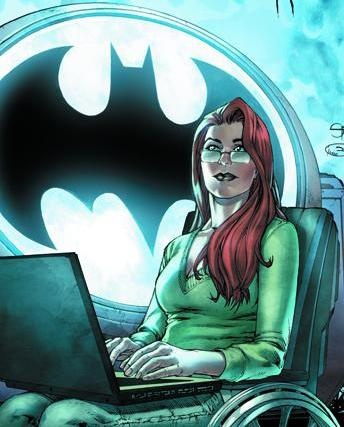
True, Barbara was still treated as an object in the story, but luckily her character arc did not remain that way for long. Years after the events of The Killing Joke, Barbara reappeared as her new persona, Oracle, the wheelchair bound computer expert aiding in Batman’s ongoing investigations. Some may argue that Oracle is just another shameless example of DMD because she was depowered for a very long time. Barbara being crippled is hardly a bad thing; in fact she is an inspiring figure for individuals who are crippled and to victimized women. Instead of just giving up her superhero career, she stood up and show that anyone can metaphorically get back on their feet, even after a traumatic event. When her character was back as Batgirl in New 52’s reboot, fans were upset because Oracle was such a diverse and interesting character. Oracle and The Killing Joke are examples of using the commentary of female violence to illustrate a point. Like Gwen Stacy’s death, Barbara getting crippled should be an exemption to the rule, not the standard.
Why the Trope Exists
WiR in not commonly known to everyone, but its significance has evolved to encompass movies and television. As great as shows like Game of Thrones and Son of Anarchy are, they too have used the WiR blatantly. It is good to see a trope be recognized by many people. Some readers may be wondering why villains killing a female character is such an important factor. Is it not equally unfair for women to die in general just to give motivation to our male hero? Yes and no! It could be considered an WiR trope if a female character dies in an unexpected accident, like Lois Lane dying in an earthquake in Superman: The Movie. However, all deaths that occur in media are done to give grief to our heroes. It all comes down to context, and whether or not the character death was warranted or manipulative. Someone could argue that Supergirl’s death in Crisis on Infinite Earths applies to WiR because she was mourned by Superman and many other DC heroes. Yet her death stands out because she sacrificed herself to save Superman, giving what all superheroes (both male and female) deserve; an honorable death.
While on the subject of male and females deaths, it may be time to address the elephant in the room. The new trope that has emerged from the comic books fans is the trope “fridging” which means the three factors of WiR can also apply to male characters. Now, in some respects, this can be true with male character like Jason Todd, who was killed by the Joker only to scrutinize Batman. Despite that, fridging is a problematic trope because it takes away the away the significance in WiR. Women are still being mistreated in today’s world, and our entertainment reflects that in many ways. So let us stop falling into the tropes like WiR that withhold women in stereotypical roles. Do tropes like WiR automatically make a story bad? No, but they can perpetrate harmful stereotypes if not addressed. Women in Refrigerators was created so female characters would be treated like human beings, not slabs of meat to be tossed in the fridge.
Work Cited
1. Feministfrequency. “#2 Women in Refrigerators (Trope v.s. Women).” Online video clip. Youtube. Youtube 6 April 2011. Web. 12 Sept. 2015
2. Vanier, R. (2014, November 26). Women in Refrigerators. Retrieved September 24, 2015.
3. “Elektra”. Elektra (Character)- ComicVine. ComicVine, 15 August 2014. Web. 24 Sert 2015, from.
4. “Big Barda.” Big Barda (Character)- ComicVine. ComicVine, 1 June. 2015. Web. 24 Sept. 2015.
5. “Punisher.” Punisher (Character)- ComicVine. ComicVine, 19 Sept. 2015. Web. 24 Sept. 2015. .
6. “Women in Refrigerators.” Women in Refrigerators (Concept)- ComicVine. ComicVine, 21 May 2014. Web. 24 Sept. 2015.
What do you think? Leave a comment.



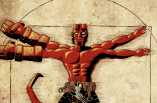
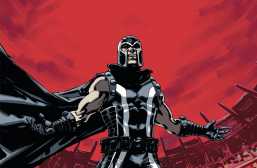
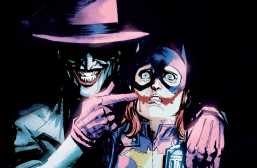

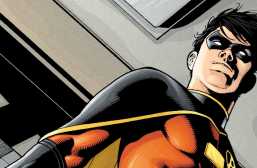

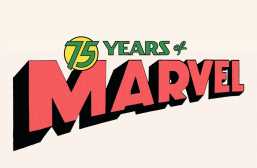
An interesting article about a trope I was previously unaware of. I honestly thought this was going to be like a reverse of the Japanese film ‘Freeze Me’. I agree that women should not be forced into stereotypical roles in storytelling. That’s not to say that women should never appear in these roles, just that it seems unnecessary to have them always take on the roles.
Gail Simone. A great female comic book writer.
She certainly is 🙂
Fredric Wertham the author of Seduction of the Innocent affected how comic books are viewed today. During the 50’s comic books were essentially unregulated, and society was changing pretty rapidly. His basic argument was that comic books were a contributing bad influence on society and youth, he was basically the Anita Sarkeesian of his day. He said Superman was un-American, Catwoman was a hussy, and that Wonder Woman was a lesbian… to name a few of his critiques. To make a long story short the public believed him and comic book characters were changed to fit the metric of what was supposedly proper. Thus the comic book code was born.
Now in terms of what this has to do with Simone, is thus; what she is basically saying is that there is a lingering aspect that was a direct result from the comic book code that never quite faded away. During the code female characters were made more… digestible & demure. For example…
– Catwoman was no longer the nemesis of Batman but was made his partner instead
– Wonder Woman was neutered in many of her stories and was eventually depowered
– Superman was suddenly much more patriotic
– Batman was suddenely married to Catwoman to disprove the ‘gay’ rumors of having a boy wonder (that one is kinda funny to me)
Basically, she and people like still see the resonance of traditionalism within their favorite comic books. The institution of the comic code was akin of a nuclear bomb those that can remember it or are aware of it, still feel the aftermath of those effects. Whether or not you agree with her point of view isn’t all that important to me, but that’s pretty much where their opinion forms on the matter. They are looking at an entire history of causation, instead of a short 20 year period.
I am familiar with Wertham’s impact on the comic book industry, especially where books like Tales From the Crypt are concerned, but just to be sure that I understand you, you’re saying that Gail Simone was disgusted with Green Lantern #54 because its a morbid reminder of the days prior to the establishment of the comic book code?
Usually when someone is disgusted with something that’s media based or social they’re rage often can exist on an emotional continuum. So Gail isn’t only mad at the singular Green Lantern issue, but also the reflection it caste on society as a whole. Usually when sections of race, sex, or class believe that they’re victim to a certain social stigma or disparity, they can be easily enraged by something that may seem innocuous to those who’re not within the same bracket. (Triggered: is the term)
But to answer your question: Yes and No, I think Gail’s discontentment at the time was born out of an honest frustration. Now that comic books have grown as a medium, she seems a bit more restrained in her views. Her opinion on Frank Cho’s recent controversial ‘Manara poses’ for instance was quite nuanced.
Basically she said… (paraphrasing) She liked his work and has books of his great drawings, but she thought that he could have handed the fallout better and just admitted he was being a bit of a troll. Anyways… most of this is just my opinion on the matter.
Lastly, when I first discovered the ‘Women in Refrigerators’ website it rang very true to me. Mainly because, I enjoy a certain kind of visual violence and the aesthetic that comes along with it. As a fan of horror and comic books there are certain urges or levels of attraction that some of the deaths she mentioned conjured up in my mind. So from a female perspective, I’d imagine it would be quite unsettling for them to imagine someone taking some kind of sexual pleasure from a female character dying or being harmed.
From the few women I spoke to about this issue, this was one of their main concerns; the fear of being eroticized even in death. Given that most female heroines at the time were drawn to attract male readers, I think it’s easy for a female reader to arrive at this position. Whether it’s true or not is another conversation, I suppose.
Whether this is intentional or not is kind of a hardline to draw when society itself puts so much value on female autonomy.
Wonder if you’ve ever come home to discover that the woman who was supposed to have dinner ready for you was killed and stuffed into a refrigerator.
I’m been reading some great comics studies here. Maybe you all will even convert me to a comic book lover.
Good article. You did a good job of breaking down a trope that can sometimes be difficult to explain. It is a shame that this has been so commonly utilized in comics, but I feel like recently writers are fixing some of these wrongs. For example Barbra Gordon was given her legs back as Batgirl in the New 52 and written by Simone. (I’m not a fan of the Burnside Batgirl so I’m glazing over that) and Elektra I’m fairly certain is back from the dead again. Even so, it is important to draw attentions to these tropes where they exist; not to say that female characters can never be killed off that way, but it absolutely should not be the norm.
Very true. While I did miss having Barbara Gordon as Oracle, I’ve heard that the recent Batgirl comics have been very good. Another character that comes to mind is Gwen Stacy as her new persona Spider-Gwen. It is good to see victims of WiR to come into their own as characters.
I agree. I also think that WiR can come across as being lazy and uninteresting writing.
Ah, this was always a big deal in comics. It was a significant factor in the creation of the CCA (Comics Code Authority).
I actually really like this trope. For male readers (or even female) avenging a loved one, especially a partner, is a very relatable motive to act on without reserve. I can think of no other trigger that would lead me to risk my life with such abandon to accomplish a goal than the death of my partner. It may be a cliche but when used with the ‘tried and true’ connotation, cliches are just another kind of meme strong enough to stand the test of time.
I agree that the death of a loved one can be a relatable human motive, and that a properly crafted avenging storyline can be an incredibly moving work of art. But I think the problem with this trope is that it is not just the death of a partner. Were it equally common to see men and women avenging characters who were truly partners, and not just objects, I would have no problem saying this was one of the most important storylines a comic book, or any other work of fiction, could tackle. The trope is called women in refrigeradors for a reason – it is very rare to see a man killed as the catalyst for a heroine to defeat her nemesis. While I certainly see your point that avenging the death of a partner is a long attested story arc and a universal human experience, I don’t think this trope deserves to be a ‘tried and true’ cliche because it misrepresents a full half of the human population.
The WiR trope is clearly sexist, but I don’t think there is a solution as simple as killing men to motivate their heroines. The sexual elements do not translate directly, in my opinion. Gender roles need to be challenged in a progressive society, but men tend to be more sexually interested by a weakened or submissive woman than the other way around (not true 100%, of course, but generally). A man holding his dead/wounded woman computes differently than a woman weeping over her man. The tragedy is the destruction of something innocent and demure, traits which–for reasons societal or evolutionary–are more typically feminine.
This is the first I have heard of this trope, but it is not the first time I have experienced it. As a long time comic book and graphic novel reader, I often am able to guess what the fate of the female love interested before it happens, which is unfortunate as we see here from this trope. It may be time to retire the WiR trope, entirely, if not just to allow for an evolution in comic book story telling. But of course, the best reason to do so is to stop treating women in comics as items to drive the plot forward or worst – a MacGuffin device.
You bring up a good point. The fact that comic book readers can often predict the death of a female character is a sign that WiR is almost inescapable most of the time.
I have to say this is a good article…I am not really familiar with comic books and there arcs…bbut this made me want to read the comic books you touched on..however for some reason I wish you would have talked about Identity Crises and the role women played…good job, great article…
Thank you and I’m glad you like the article. I’m actually not to familiar with Identity Crises, but I do know a bit about it.
It’s really a good comic, well a graphic novel…its a diffrent look on the DC comic book heroes and a great example of the WiR. It just opens up with a who done it and leaves you in what in the world after you find out…
Hmmm…good article.
This article touched on some really good points, and whenever I get to read an article discussing the tragedy of Gwen Stacy I’m intrigued. The women in comics are used as devices to strike an emotional chord with the readers and the characters they are tied to.
I completely agree. But do you think that Gwen Stacy is just used as a device? Or does her tragedy stike an emotional chord with the reader precisely because she is a fully fleshed out character rather than a plot driving element?
Is there a TV Tropes term called the “Under appreciated sidekick” or “Under appreciated sibling” because I’m kind of like that sometimes.
heck if you follow anime and how many badass females are in manga {Japanese comics books}.. they are plentiful. and I would now I am an otaku.
Women do read manga more than comic books from the looks of it…
I like Dc. Not marvel.
This is so true and it both saddens and angers me… for example, I choose to ignore Elektra’s death because of it’s stupidity and worthlessness. I don’t understand how women who are sometimes stronger than men in comics can be killed so easily. A cop-out if you ask me.
Thank you for quite an education. I am one of ones on the interwebs unaware of the meaning of “women in the refrigerator.”
I will observe it in the context of gender issues.
Gender and racial biases are a problem in societies, but so are other differences. For example, what about “ageism” in our American culture, which must be felt most painfully in Hollywood.
Stephanie Brown is a great example of what can happen when we call creators out on these misogynistic tropes. Fans pitched a fit after Stephanie’s death — formed Girl-Wonder.org, wrote letters, persistently asked DC’s editors and writers about her fate at con panels — and now she’s back and headlining her own (very funny, highly recommended) “Batgirl” series. Bitching gets results!
The fan absolutely had a right to be mad. Stephanie Brown’s death is an example of torture porn, and it’s awful that a great character like her had to go out in such an exploitive way.
This trope isn’t restricted to comic-dom at all. Nice work.
That’s completely true. I hope this article gets the idea across that not only does this trope happen way to often in comics, but just in media in general.
Not restricted to the medium, but it is the medium that highlighted and gave a name to the specifics of the trope.
This happens to most characters in comic books not just women.
The entire reason this is recognized as a trope is because it happens disproportionately to women. When you also control for how many women heroes there are there is a gross disproportionate occurrence of fridging to female heroes and characters
How would any death close to a hero not grieve them? People, not just women, who are close to the hero get killed. Most conflict comes from death, regardless of gender. Granted, while a lot of women seem to die to grieve heroes, that’s because a lot of superheroes are straight men, and villains will always go for loved ones (girlfriends, wives, mothers). I think the only solid footing you have is in the case of Big Barda. That one I agree with, as she is supposedly an amazing warrior that gets shot and dies. Regardless, calling it manipulative is just… what? It’s storytelling. Sometimes people die. Sometimes they don’t. Anyway, interesting point of view, even if I largely disagree.
The Killing Joke avoids becoming a completely distasteful example of WiR by not giving Gordon an urge to kill.
No.that’s ridiculously wrong. So because the target dude didn’t literally become vengence she wasn’t fridged? That’s silly word games. You’ll note that batgirl is on the list at http://www.lby3.com/wir/women.html it’s not about Com. Gordon. The trope isn’t about him. That’s the same logic Miller probably made. It’s about her and treating her like an object rather than a person. She’s not a super hero in this story used to taking on the evils of Gotham City. One who probably might have noticed the glint of a gun before it hit her a point blank range. She’s a pet dog killed to make someone angry. Shot with no effort, no consequence (because what’s a dog going to do), a barely a forethought.
And to bring up Oracle completely missed the point again. The Killing Joke wasn’t written as an origin story for Oracle. There were no plans to being her back as the definitive Superhero hotline when she was shot. Gordon is a classic fridged woman and they did something positive with her but that doesn’t mean she wasn’t fridged.
Gordon worked side by side with Batman four years. Yet she was taken out not after a long battle like Knightfall when Bane made Batman fight and recover everyone in Arkham Asylum before he fought him, or because she was new like Jason Todd, or with a wildly successful plan like when Harley captured Batman four Joker, but on basically a whim being caught by surprise in her home. Not tricked but surprised. It’s ridiculous. Her depowering wasn’t too stop Batgirl but to motivate her father and Batman.
Batgirl isn’t the exception to the rule she’s probably the most well known example. The Killing Joke is a classic story. Problematic, but classic. I still haven’t read that green Lantern story.
Female characters being tortured for little reason is terrible, and I am glad Gail Simone brought this issue to the fore front. There was a particularly egregious example in a comic some years back where a popular female supporting character was tortured and left in a highly sexualized position simply to prove how evil the villain was…
This is really interesting.
We need more female characters with their own stories. 🙂 If Batwoman is injured in her own book, and it’s part of a story, okay. If Batwoman is only a supporting character for Batman, and is then killed or injured in service of HIS story, it’s totally different. It’s the same as the difference between Aquaman’s injury and Alex’s death. Aquaman’s injury happened to HIM, but Alex’s death happened to KYLE.
Yes – that’s exactly the prolbem – the female characters don’t own these storylines. Their injuries and deaths happen to someone else.
Gail Simone was correct in pointing out this trend in mainstream superhero comic books. I have to admit that as a male reader the prevalence of this treatment of female characters sort of slipped below my notice. Then I reexamined a lot of the comic books that I had read over the years, and I have to agree.
This was a wonderful read, thank you for this. Keep up the amazing work.
Thank you. You’re too kind 🙂
This is a fabulously written perspective on something, comics, that I think is really overlooked as such an intellectual, literature driven piece of work! I loved how you addressed the issue of the classic stereotype of “damsel in distress.”
Even though I’m not an avid comic book reader, I appreciate that you’re analyzing it with the heft it deserves on a topic that deserves attention.
Thank you very much. I’m glad you got something out of my article because I wanted to expose more people to this trope and why it exists.
The Killing Joke shows how gruesome the Joker can be, an amazing book with lasting effects on one of the best villains ever made.
Thank you for this post!
Green Lantern #54 was actually my first ever issue of Green Lantern I read. What a way to start…
I believe that it comes down to awareness. Male heroes/villains have just as many male family and friends to be killed or maimed as female. Likewise for female heroes.
It’s not about eradicating supporting characters getting hurt or killed. That’s a part of the mythological arc of superheroes. But what’s important is a more equal gender distribution. Also, that female characters get as much chance of a full recovery/resurrection as their male counterparts.
Amazing article!
Always happy to see comics-related coverage.
Some of these are gender-interchangeable though where the female involved is as involved in the plot as the protagonist and is slightly different from the “protagonist’s family is killed to start a quest for vengeance” trope which is far older than modern entertainment. The trope definitely exists but its reach is not as significant as you might think in good fiction.
Awesome job with the feature!
I always thought that Gwen Stacy’s death was very out of place and seemed only to cause Spider-Man an unnecessary amount of grief to attempt to further his character in some way, that with more creativity and thought could have kept the couple together and still propelled the character forward from adolescence to adulthood in an innovative way.
Problem is lack of originality in story telling. Every story has a death, torture, or in less cases, rape angle to them. Hell, how many Black ppl that were the friend of the protagonist died mid-90’s? In Eastern movies and stories, the father is usually the one that bites the bullet.
I found this article captivatingly interesting. It’s a trope that I was entirely unfamiliar with. It walks a fine line and what classifies as WiR and a heart wrenching plot point. This trope sparks great conversation and allows a refined lens of critical analysis of works.
Very true. It is a trope that is definably worth discussion
Barbara Gordon, I found, became an interesting subversion to the trope when she became Oracle, which is nothing to sneeze at, to be sure.
That being said, I think what is most irksome about the trope is the grotesqueness that has accrued to it. Killing the hero’s wife may not be in itself misogynist or lazy, in the hands of a skillful storyteller, but the violence of some of these deaths has reached the point of absurdity. Hence the name, I’m sure (a refrigerator? Really?). Instead of inspiring any sort of pathos, they repel by their gratuitous grotesqueness.
Gives one a lot to think about. Thank you for facilitating the discussion with your excellent article.
Thank you very much Luthien. I agree that one of the big reasons WiR is a bad stereotype is because of how unnecessary violent the women’s deaths are.
I would like you to know that your article not only inspired me to write a poem for my creative writing class, but it also took over the class and we ended up having a 30 minute conversation on WiR.
This is such an eye opening article about the theory, and is an interesting way to connect people who aren’t involved in comics through social issues.
I’m really glad that my article inspired you so much. At first, I was not sure if people would be interested in the article, but thanks to you and many other readers, this has probably become my favorite article I have written so far. Thanks for reading 🙂
I loved your article! I especially loved your analysis on Gwen Stacy and Barbara Gordon. Nice work!
Thank you very much Amanda
I like the stance the article takes. It starts off seeming like a general list and condemnation of the trope, but as the article develops more emphasis is put on the importance of context. There’s no apology for the trope or simple hatred for it, but a genuine consideration of its place in comics. Bravo.
Thank you very much and I’m glad you understood where I was coming form in this article. It is certainly a bad trope, but a story that uses the trope should be judged by the context of the story, and how it was used.
I believe this is an excellent article as to why so many female characters of the DC universe are killed in the kitchen or die in a manner that portrays to their feminine characteristics.
Great piece
Well done! I’m so tired of comics and television killing off the female character just due to laziness. It’s just a lack of creativity, in my opinion.
Sometimes yeah, it happens. But most of the time, no! Think about Batman’s parents, they were also made just for being killed.
Loved this article! Why is it that the death of Jason Todd considered to be more heroic than the crippling of Barbara? I think when it comes to Batman Comics, everyone around Bruce is fair game for death. The line is so fuzzy there, but if you get a good enough writer who can give the character a dignified death and not trivialize their experience then I think that’s where it becomes okay. Just like a rape scene, it needs to be made about the woman and not about the man-pain.
Great read! Awesome job breaking down a problematic trope with concrete examples.
I should note that I am currently unemployed, which means I have a lot of time on my hands. You have been warned.
But I saved you all. I dumped the massive reply and instead, offer up this.
(1) the connotative understanding of “objectify” used here (and in much so-called feminist writing, not that men do not misuse it too, indeed) is an equivocation as well as a conflation. This is a pet peeve of mine and I will side-step it here because I have been down this road before.
(2) the issue is not sexual violence against women. I say that because were the roles truly reversed, I assume (and hope) the complaints would be the same, albeit genders reversed. Hence, the issue is sexual violence.
(3) sexual violence, like it or not, is common to fiction, to drama. It is not new. That certainly does not justify sexual violence, of course, but then again, nothing does justifies violence (self-defense notwithstanding). Yet, when violence is considered norm, then sexual violence is a excellent kind of violence, because it is so insidious. And, seeing as how violence is norm, so to speak, as a plot devise to motivate a person(s) to act, sexual violence against women in a male dominated genre ought be expected.
My points can be debated, certainly, but again, I posit that ultimately, the argument comes down to either violence in story-telling is okay or not okay. If it is not okay, then don’t read the book, comic, or whatever.
That being said, to overuse sexual violence, to target women only, to paint women in negative lights (stereotypes, etc.), and so for is perhaps morally wrong, but that counts for naught in the world of story-telling. The power is in the hand of the reader, though. As I said, don’t read the works.
Admittedly, in what I’ve seen of Simone’s thoughts, she suggests the same as do I (or rather, I suggest as does she), that the readers should read works that satisfy their tastes. Yet, I take some issue with Simone’s WiF theory and again note that the issue for her rests, necessarily (unless she is a misandrist, which I doubt) upon overt violence simpliciter, but too easily drifts over to that Men Against Women claim which, like it or not, is usually only coincidental to the genders at hand (again, reverse the genders in Marvel Universe and the issues do not go away).
So, yes predominately male characters in the comic world written by predominately male writers in a predominately male world is reality. Fine. Let’s change the world, but hear this: it will not be achieved by superfemales committing violence against supermales any more than by women taking over roles up to now held by men and…(drumroll)….ACTING LIKE MEN. That’s not equality; that’s stupidity. And I ended up ranting after all.
Now to see if this gets posted.
Something that does speak to this particular trope (probably the reason why it’s used in the first place) is that the murder of a female loved one or the wronging of or by the same is a major motivator for the male. Just a thought.
As a superhero and comic fan I was aware of these deaths as they are particularly traumatizing when immersed into a storyline, however I did not know Women in Refrigerators was the appropriate term for it. As mentioned in the article many of these instances are unconsummated and leave the audience with questions or generally unsatisfied. I personally believe that WiR began due to male dominance in society. Throughout history women have typically been seen “beneath” men or as sub-servant partners, so when we are thrown under the bus it’s not much of a surprise. Thankfully through progressive thinking and feminism things are changing. In instances such as the Death of Jason Todd we see “fridging”, but the ultimate end to this dilemma is thorough, writing. Developing thought-out story lines for comics, television shows and movies will save writers and audiences from cheap character deaths.
I actually never heard of WiR before but now that I’ve read this it opens the doors to so many plots inside and outside the world of comics.
Seriously though, this article is perfect. It deserves a big, ol’ YES! Thank you!
Thank you very much Jaye. Your kind words really mean a lot to me 🙂
What is the difference between WiR and just having a character die?
Is it strictly an antagonist killing a woman, and the male protagonist seeks vengeance or motivation from that death?
Would it still be fridging, if say, a wife dies in completely accidental car crash while driving to work. Or mother dies from cancer after a long life. And man, after stages of grief, is motivated to make a change in his life.
Or is it more a woman is specifically written into a fictional story to die by whichever means, to give motivation to male character.
I used to be a big fan of Stephen King. I tired of his writing style more so than the tropes he used, and stopped reading. He used Magical Negro (and variations thereof) a lot. A LOT. And although that bums me out, in his book On Writing he defends it. He said to write write write, and let the story proceed how it may. No matter what you write someone is bound to find fault in it. It’s the story that matters, not how some people might get offended. By writing scared of offending a group of people, the reader will see the lack of confidence in the writer. And the story will be watered down.
I’m not saying I agree with him, but a point can be made.
What do you think?
Thanks for the article! I didn’t discover this “fridging” term until I read a review of Daredevil season 2 on Netflix.
Super interesting, great article!
A good article but I think it would have benefited from more in-depth integration of feminist and disability theory to really dive into the significance of the tropes. It is also interesting that when Alan Moore asked to cripple Barbara Gordon the editors of DC at the time said to: “cripple the bitch,” this has some pretty big implications for how sexism and ableism works in comics.
Knowing this really makes fiction writing much more inventive. Every time I find myself using a female character I really think and think and think about that character’s role. There are lines which you try not to cross.
I would argue that Gwen Stacy and, to an extent, Barbara Gordon’s treatment might still count as being pure examples of WiR, as their accidents were both used as a device to build on the male characters: Peter Parker learns that he needs to keep his two lives private, the reader learns that Commissioner Gordon could not be driven to a point where his morals could become corrupted.
I have found the WiR trope to be a factor in continuing to read a book or not. As a long-time comic reader, I can sense when something is not right and I abhor using the WiR as a plot device. It makes the writer look lazy, like a sort of deus ex machina, to advance a story arc. There is nothing more clichéd than the hero out for bloody revenge.
Unfortunately this plot device has started to bled into the otherwise decent TV adaptations of comics, especially Arrow and Flash.
I completely agree that death is sometimes an unnecessary plot device in motivating superheros, but it is also does not only target women. For example, when Jason Todd dies at the hand of the Joker, Batman is thrown into a depression that his family (all male) help pull him out of that depression. Next, Robin becomes paralyzed fighting the Flamingo with Batman. Superman dies with Doomsday. Thor with Ragnarok. Also, for superheros or their counterparts to never die would be dishonest, too. No one lasts forever even if their legacy does. Just because the way a character dies is unsatisfactory, it does not mean that part is not essential to the overall plot. For instance, when Robin fails to save Sasha, she embraces the mask PYG fused onto her face and becomes Scarlet that fights crime alongside the Red Hood. For all intensive purposes, that character has been redefined, reinvented, and she has resurrected herself into a new person. She changes once again when the mask falls off after the Red Hood’s capture. Moreover, there is an alternate universe where Gwen Stacey has the powers of Spiderman and cannot save Peter Parker in her universe either which is admittedly heart wrenching. Furthermore, Pepper Potts throws on a suit to aid people in the comics alongside Anthony Stark. Thus, there’s a lot of women empowerment in the comics. Lastly, I have to disagree with you about Game of Thrones. Spoiler Alert for those who are not caught up. First, you have a rockstar of an up and coming queen, Daenerys. Then every single time that someone temporarily gets the upper-hand on Cersei, she exacts revenge with extreme prejudice. Next, you have Yara Greyjoy that attempts to claim the iron isle’s even though her brother has returned and asks Daenerys to help her. Finally, Aria Stark was one of two girl proteges of the many faced gods, and she fights her way out of their control by reclaiming her identity. That looks more like women empowerment versus Women in Refrigerators. In the end, I’m not trying to say that there is absolutely no discrimination for women in comic books or in any other material because I think there is. I also think that you did a great job bringing light to this issue. However, I just think your frustration stems from the author’s lazy writing. I can understand someone wanting to talk about Batman fighting off the Joker versus explaining and making the audience feel the blow of being a millionaire orphan. Yet, that suggest lazy writing to underestimate the impact of those preceding characters and to make them, particularly the women characters, feel disposable.
In light of the recent animated re-make, I would like to categorically disagree with the idea that Barbara Gordon’s role in “The Killing Joke” should somehow be considered exempt from qualifying as a “WiR” trope. I think I understand what you’re trying to say–something like, if a story is more well-written than it is offensive, then it flies. I agree with this idea as a general rule, sure, though I disagree strongly with the notion that a negative stereotype (WiR) should magically “not count” at all, just because a story is well written (in your opinion). In cases where WiR is a trope, I think it’s much more accurate to say that–though the trope in question is definitely still an example of a negative, perhaps damaging and at least limiting stereotypical trope, and nothing can really change the fact that it is definitely used in this story–BUT, the story is so well written (in your opinion) that (you, personally, think) it’s still a good story anyway, even though it contains this trope that has a reputation for being so much more negative when it appears elsewhere. I don’t think it’s at all necessary to pretend that these conflicting circumstances (WiR, sexism, stereotypes, etc., and good writing, intelligent storytelling, engaging plot, etc.) can’t simultaneously coexist in the same story. In fact, I would argue instead that this actually happens all the time, and there is no need to pretend that the one somehow magically “cancels the other out.”
That said in general, I would like to comment on Barbara Gordon, specifically. The minute I started reading all the excuses this article unexpectedly started making on behalf of “The Killing Joke,” it dawned on me quite suddenly and to my surprise that the author of this article was clearly male (which, it turns out, was a completely accurate instinctive perception). The idea that somehow, “‘The Killing Joke’ avoids becoming a completely distasteful example of WiR by not giving Gordon an urge to kill,” is extremely problematic to my reading, especially because of how you frame the entirety of the meaning of this horribly brutal, savage sexual assault inflicted on the only female character–in terms, 100%, of how it affected a MALE character. I hope you can see why this is a problem in your reading. I understand that you’ve chosen to frame the WiR trope within the tight boundaries of your list of the three enumerated criteria, and because Gordon does not want the Joker killed afterwards, you think that therefore this trope no longer qualifies as a WiR. But–Gordon is still motivated to defeat the Joker, which is actually one of the possibilities in the list of your own WiR criteria, so this answer is not really satisfactory, even according to your own rules. Then there’s all the discussion of how much “better” Barbara Gordon was after she was depowered and crippled, and how she (FINALLY, decades later) returned to her role as Batgirl… May I make a suggestion…?
Perhaps, just perhaps, it would be more helpful in this discussion to frame the criteria of what counts as a WiR less in terms of a numerical set of rules, or even in terms of your own opinions as to whether or not a story has merit. Perhaps, just perhaps, it would be more helpful to frame your discussion of WiR–and other such harmful tropes and stereotypes–in terms of asking one simple question:
Does it HURT people…?
I think you were right the first time you described the events in “The Killing Joke,” before you started making so many excuses for it–it is, as you say, “an unnecessarily violent way to exploit Barbara Gordon as a character.” As a long-time Batgril fan–and perhaps more importantly, as a GIRL–I can tell you that this horrifically violent, demeaning, vicitimizing, brutalizing depiction of sexual assault against one of the only really powerful and appealing female characters in the entire DC universe–well–it HURT me. It hurt A LOT of women who read this comic. And, to tell the truth, it hurt a lot of men, too, whether they knew it or not. Because, as even this article makes clear in its very indulgent, permissive discussion of the depiction of this extremely violent, victimizing sexual assault against a (previously strong, heroic) female character, this is apparently still something that a lot of men–and women–have been taught by media and popular culture to regard as excusable–even normal–in the stories that we tell in our culture. This is literally nothing less than teaching women to see themselves as victims, and teaching men to regard this as normal and excusable. Obviously, this is a problem.
So, when asking if a story trope is an example of WiR, or sexism, or stereotyping, etc., I think it might be more helpful to ask whether or not the trope as it appeared in that particular story ever HURT anyone–whether it ever had negative, detrimental effects upon anyone’s perceptions of themselves or others, their own personal power or lack thereof, and their place in their own lives, their own stories, in their own worlds, or wherever else they may see themselves belonging (or not belonging). While this is, admittedly, rather difficult to quantify, I feel it is nonetheless a much more valid criterion by which to judge the merits of a trope or a story, especially as regards its status as a message and a form of mass-communication. This, too, might help you avoid “should” statements, and other such distortions of your own lens of subjectivity, as bringing in the perspectives of others is ever a helpful thing when attempting to judge a piece of cultural media that was not intended for just one person alone, but for the mass audience of the entire comics-and-media-consuming culture.
What about Father Figures in Freezers? The tendency to kill off male characters, especially father figures in the same way, for the same reason?
I think that the main flaw with The Killing Joke is that there isn’t any exposition on Barbara Gordon. This turns her into an object or a pawn just caught in the play between Batman, Joker, and Gordon. I would rather her be a great character so that way we feel something when this happens to her; but it doesn’t within that story. The feelings we have towards Barbara aren’t earned at all.
Interesting article indeed
“cripple the bitch” and she ended up as a noncharacter for years
I really do agree with our article, WIR is really becoming a common trend that needs to be corrected although it would be difficult to do so, when you think about it. This is because what would you replace the female character with my first immediate thought would have to be children or Male spouses however the comics would become heavily scrutinised if they had villains killing of children. However this could be voided if they started to use Young adults such as Dick Grayson or Miles Morales.
However it is an interesting article that i may have to reread.
Thank you so much for this article. I’ve been looking for a concise and readable example to show friends who have never heard of this trope or think it’s harmless. I’m glad also that you pointed out it isn’t a comic-exclusive trope, though I did feel it was possible to include other books and movies in the list. I was also hoping you would touch on other ways that female characters are removed from story lines, if only to point out that WiR isn’t alone in being a gatekeeping mechanism to keep casts predominantly male.
But those things aside, this is one of my favourite articles i’ve read so far on this site. Thank you for sharing 🙂
I enjoyed this article. The trope is much older than comic books and you aptly show its weaknesses. I tend to agree it is a cheap shot and often a result of lazy story construction. Bravo!
Effective article. Although I wonder if it is counter-productive to discuss the misogyny of wantonly killing female characters to also continually use the phrase “cripple” so frequently. As a term, it is quite outdated and I’m sure many academics would cringe at its deployment.
Should’nt it be people in refrigerators? I mean really this definition happens all the time to male characters as well. It really just seems like some feminists got together and decided that this was something that only happens to women when that is patently false. It comes off as quite sexist actually.
What do u think bout catwoman?
Why are the citations not hotlinked? That’s pretty tacky, given that you extensively source from the WiR website and other sources.
Do you overthink everything, or just this?
A good piece. Jason Todd, as I’m sure some others have pointed out was killed by the fans. It was a phone in vote and although it might have been rigged by some fans it ultimately was a vote that fans voted to kill the character off.
This was a very interesting read. I had no idea that there was an actual name for the constant killing off of female characters so it was great to learn something new. I do wish that when stories create a strong female lead, they would leave it that way and not find a way to bring her down or completely kill her off.